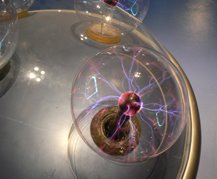'Hyperconnection' and Tom Hennes
Interesting article about the future of natural history museums, and their necessary evolution from position of detached documentation of the world around them, to a position of engagement and interconnection.
Hennes talks about the need for museums to find a niche for themselves within their community, and to engage with the urgent issues of the 21st century - the changes in the world's ecosystems and the corresponding effect on biodiversity. He sees natural history museums as being ideally placed, with their bodies of knowledge about their collections, to take an active role in current research:
Science has awakened to the storehouse of biodiversity maintained in the millions of specimens stored in natural history museums, and is using this wealth of data to track long term change and support surveys of endangered areas.
An example is the development by Naturalis (the Dutch National Museum of Natural History)of joint programmes with environmental organisations. They have established a Dutch biodiversity register, and a student educational website.
The Australian Museum has established a joint project with Rio Tinto called Biomaps, a project to produce an interactive web based mapping system to show where biodiversity data is held in Australia and overseas.
There is also a move to create a digital object labelling system called LSID (Life Science Identifiers, a version of GUIDs (Globally Unique Identifiers) which provide a unique identification system. Here is a link for more info on this, and info on other types of digital object identification systems can be found here.
There has been a lot of discussion on this issue of digital identification. As Wikipedia describes it:
A DOI can apply to any form of intellectual property expressed in any digital environment. Intellectual property includes both physical and digital manifestations, performances and abstract works: DOIs can be used to identify e-texts, images, audio or video items, software, etc. An entity can be identified at any arbitrary level of granularity. This means that, for instance, DOIs can identify a journal, an individual issue of a journal, an individual article in the journal, or a single table in that article.
This really is getting to the nitty gritty detail of the digital world - and I thought the internet was an unruly swirling mass of digital data!


3 comments:
thanks for posting this Mel. I'll respond more fully to the article but just to let you know that we will meet with Paul next Tuesday about it - I'll let you know the time
interesting stuff Mel
as usual whatever you can think of has either already been applied in a similar way elsewhere or someone somewhere is on the same wavelength
Just think of it as serendipity rather than repetition...
I haven't worked out the blogging protocol yet, so i have blogged in response to our discussion with Lynda rather than commented. Please see if my interpretation is makes some sort of sense, and if i left out any crucial details Paul.
Post a Comment